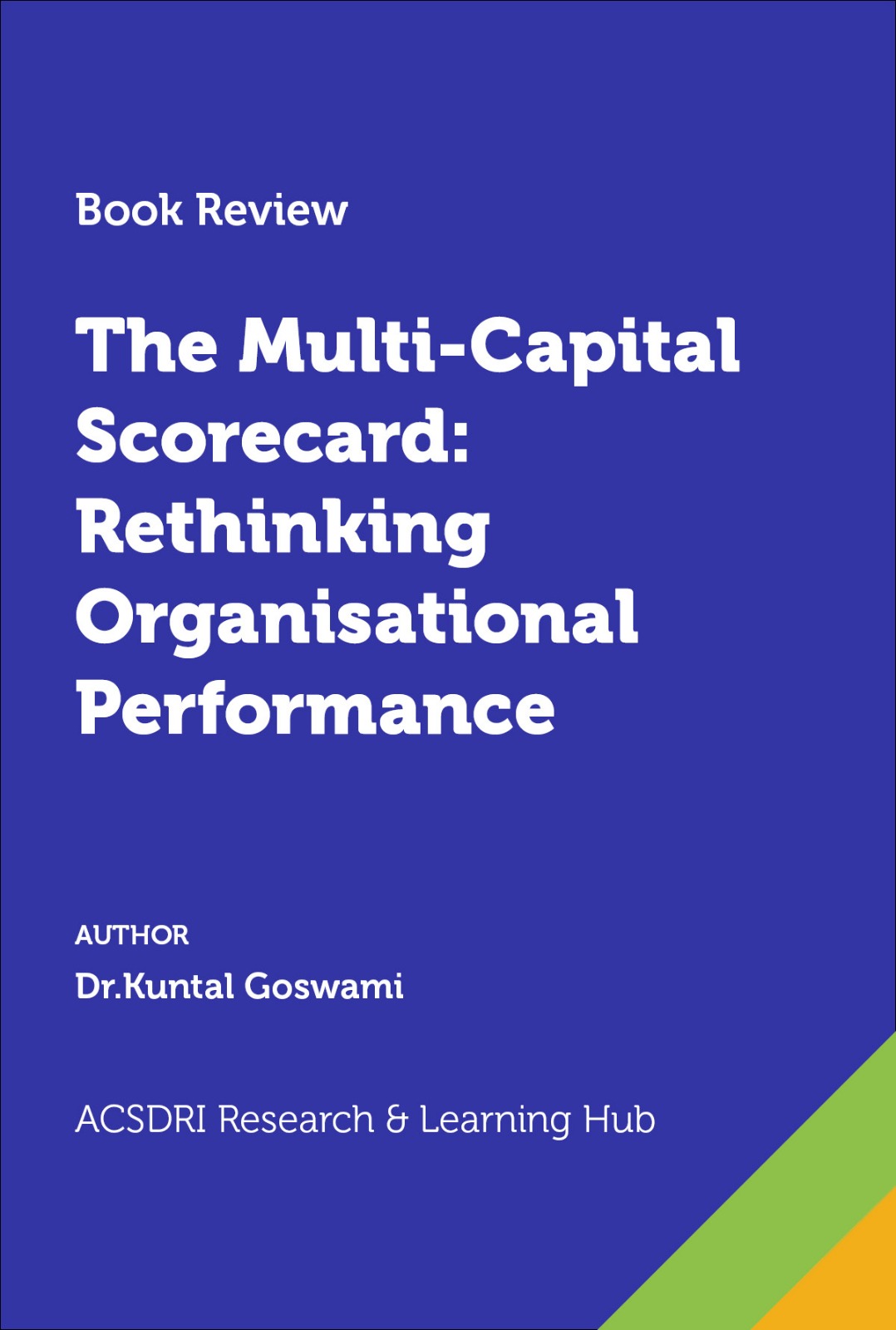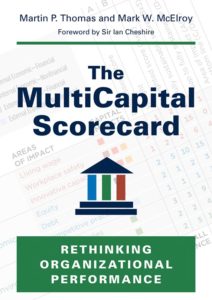Book Review
Book Review of “The Multi-Capital Scorecard: Rethinking Organisational Performance”

Book Review: the Multi-Capital Scorecard: Rethinking Organizational Performance (2016)
Abstract
The book is a self-help guide on how to assess an organization’s internal social, economic, and environmental performance based on its internal goals and stakeholders’ expectations.
Key Word: Multi-capital Scorecard, Sustainability Performance
Visit: https://multicapitalscorecard.com/
Book Review
Sustainability is the goal, and sustainable development is the process. However, the million-dollar question is how we measure our business’s holistic sustainability performance (economic, environmental, and social). In order to answer this question, Martin P. Thomas and Mark W. McElroy theorized a Multi-Capital Scorecard to measure the level of sustainability performance in an organizational context.
The authors proposed that the organization conduct a self-assessment of its impact and adopt target-driven steps to improve its accountability. These steps initiate the stakeholder engagement process and roll out the plan to adopt requisite sustainability steps.
The book has highlighted various reasons why we need the Multi-Capital Scorecard. We need this scorecard because of reputation management, stakeholder engagement, and organizational learning. However, the most compelling reason the authors have put forward is the ‘Evolving Norm.’
In this context, the authors mentioned that “… scorecard… asks organizations to set sustainability performance standards. Related norms are made explicit and subjected to periodic review. Regardless of the sustainability agenda, aligning performance norms to the needs of stakeholders is no simple matter, and the Multi-Capital Scorecard offers a practical solution for performing this essential management risk …“.
Hence, the book is a self-help guide on assessing an organization’s internal social, economic, and environmental performance based on its internal goals and stakeholders’ expectations. However, to reduce the subjectivity of the scorecard system, the book devotes a whole chapter to materiality. Hence, the book is an excellent work and addresses how to account for those normally unaccountable aspects of holistic sustainability. It explains how to:
- scope and ascertain the Materiality aspect of sustainability accounting;
- determine Areas of Impact (AOIs) of an organization; and
- implement the scorecard.
The book has ten chapters, and some of the highlights of each chapter are as follows:
- Chapter 1: The chapter explained the need for a Multi-Capital scorecard. The authors argue that by adopting their prescribed scorecard model, organizations can address environmental and social challenges and improve adaptive capacity and stakeholder engagement techniques. In addition, the model can also assist organizations in bringing about qualitative improvement in management information systems and organizational learning processes and safeguard reputation management.
- Chapter 2: The second chapter introduces readers to the concept of capital and its six vital categorizations: natural capital, human capital, social and relationship capital, constructed capital, internal economic capital, and external economic capital. In the end, the concept of “context-based sustainability” is introduced.
- Chapter 3: The chapter provided the theoretical as well as operational methodology of the Multi-Capital Scorecard. The authors presented detailed steps to practitioners on how to apply performance scoring mechanisms and report performance.
- Chapter 4: This chapter dealt with the practice of the Multi-Capital Scorecard concerning financial performance.
- Chapters 5 & 6: These chapters demonstrated the Multi-Capital Scorecard in the context of single and group companies.
- Chapters 7 & 8: These chapters educated readers on two important, challenging topics relating to measurement: materiality and how to measure intangibles. Chapter 7 explained absolute and relative materiality concepts and provided a materiality template for measuring social, economic, and environmental performance. Chapter 8 discussed how to apply the Multi-Capital Scorecard in the context of intangibles such as brands.
- Chapter 9: The chapter discussed a few contemporary vital topics such as integrated reporting, multi-capital scorecards about integrated reporting, double-loop learning, and external assurance.
- Chapter 10: The concluding chapter provided a broad overview of how the Multi-Capital Scorecard works, tried to close intellectual gaps between academics and practitioners, and bridged the interests of shareholders and other stakeholders.
Finally, in the appendix, the book has provided foundational theory explaining how to use context-based metrics and other thought-provoking intellectual concepts.
Acknowledgments
I thank Mr Martin P. Thomas, one of the book’s authors, for allowing me to review this book.
Buy from Amazon
https://www.amazon.com/MultiCapital-Scorecard-Rethinking-Organizational-Performance/dp/1603586903


